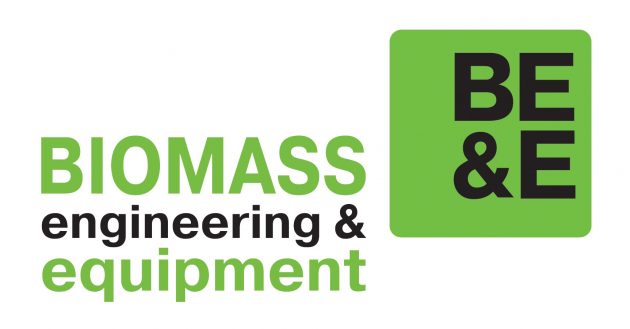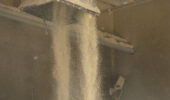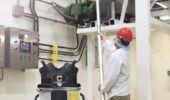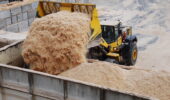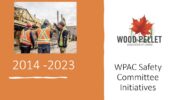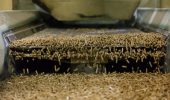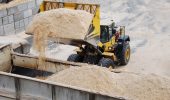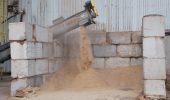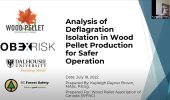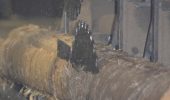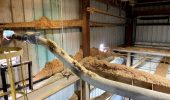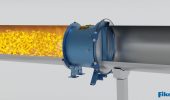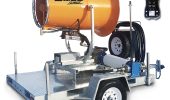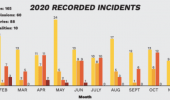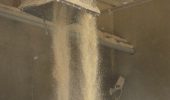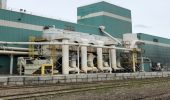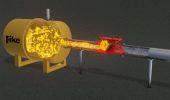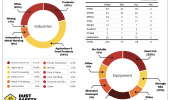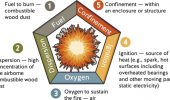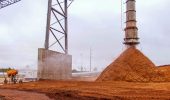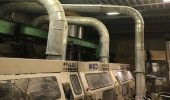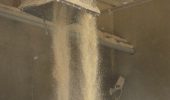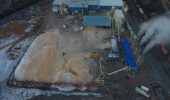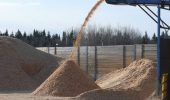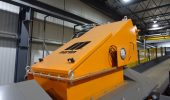
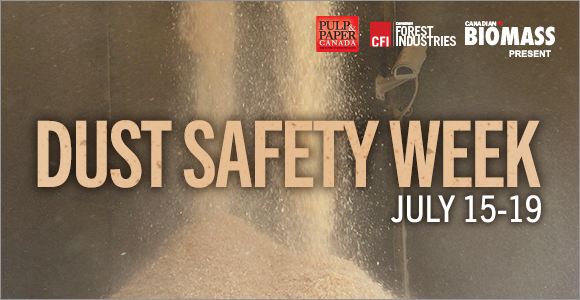
Now in its eighth year, Dust Safety Week is the hub for pellet plants, sawmills, and pulp and paper operations to learn best practices and find the latest information year-round on keeping their operations and operators safe.
Join Canadian Biomass, Canadian Forest Industries and Pulp & Paper Canada July 15-19, 2024, as we turn the spotlight on dust safety best practices, technical information and solutions for our annual Dust Safety Week event!
Throughout the week we will be sharing:
- profile stories from operations that focused on dust mitigation
- technical articles on dust safety
- spotlights on dust safety equipment
- columns on combustible dust best practices
- and more!
Stay tuned to this landing page and social media (#DustSafetyWeek) for the latest stories and videos during Dust Safety Week 2024!
Thanks to our 2023 sponsors below. Interested in sponsoring in 2024? Reach out to Rebecca Lewis: rlewis@annexbusinessmedia.com.
-
January 3, 2024
Managing silo size and humidity key to controlling self-heating in pellets
Self-heating is one of the leading causes of
-
July 14, 2023
Here’s what we learned during Dust Safety Week 2023
For the seventh year in a row, Canadian
-
July 13, 2023
Implementing process safety principles to reduce combustible dust risks
WorkSafeBC will be working with mills in the wood manufacturing industry, and focusing on
-
July 13, 2023
5 things you can do to comply with changing combustible dust requirements
In the past six years, combustible dust incidents
-
July 12, 2023
Building a sustainable and effective combustible dust program
Bill Laturnus, senior safety advisor, manufacturing, with the
-
July 11, 2023
Combustible dust key focus of new online training platform
A new, free e-learning platform for operators has
-
July 11, 2023
Explosion protection solutions in powder-handling processes
Due to their function of collecting or storing
-
July 10, 2023
Safety share: wood hogger fires and deflagrations at sawmills
In January 2021, the BC Forest Safety Council
-
July 10, 2023
How to mitigate dust explosion hazards in the pulp and paper industry
Despite low frequency of combustible dust explosions in
-
June 5, 2023
WPAC safety huddle webinar introduces new e-learning platform for operators
The Wood Pellet Association of Canada’s latest 15-minute
-
May 9, 2023
WPAC updates its One-Stop Safety Resource for pellet producers
The Wood Pellet Association of Canada’s (WPAC) improved
-
October 21, 2022
5 steps to enhance safety of direct-heated belt dryers
As belt dryers have become more common, the
-
October 12, 2022
WorkSafeBC’s new resource addresses high injury rates in manufacturing sector
Manufacturing in B.C. has an injury rate that
-
July 20, 2022
Focus on deflagration isolation can lead to safer operations: webinar
On Monday, the Wood Pellet Association of Canada
-
July 15, 2022
6 things we learned from this year’s Dust Safety Week
This year was the 10th anniversary of the
-
July 15, 2022
Stop high-pressure compressed air dust cleaning in your mill
John Bachynski with EPM Consulting has a cautionary
-
July 14, 2022
Lessons from the past: the Murray Grain Elevator explosion
DustEx Research's Rose Keefe shares what a 100-year-old explosion can teach us about
-
July 13, 2022
Fire prevention strategies in biomass pellet production and use
As the world continues to strive to find
-
July 13, 2022
Need to vent? Talk to an expert
Biomass Engineering & Equipment's Joel E. Dulin shares practical advice on conveyor
-
July 12, 2022
Don’t wait for an incident to revisit your dust management programs
Wood processing facilities should be continually evaluating their dust management
-
July 11, 2022
Equipment spotlight: dust safety 2022
A look at the latest dust collection and suppression equipment available for biomass
-
July 11, 2022
3 ways wood product manufacturers can reduce insurance premiums
“The explosions that occurred at the Babine Forest
-
July 11, 2022
WPAC releases Belt Dryer Safety final report, shares key recommendations
The Wood Pellet Association of Canada’s belt dryer
-
July 7, 2022
Webinar: Analysis of deflagration isolation in wood pellet production
The Wood Pellet Association of Canada, BC Forest
-
June 23, 2022
Dust Safety Week 2022 is approaching!
Canadian Biomass and Canadian Forest Industries are once
-
June 20, 2022
Rembe upgrades controllers in EXKOP isolation system, allows process flexibility
Rembe is a leader in the innovation of
-
May 17, 2022
Atomized mist cannon manages dust in unfavourable weather conditions
The next advancement in industrial dust suppression has
-
January 24, 2022
Fike launches website detailing steps of a DHA
Fike Corporation, a global manufacturer and supplier of
-
November 17, 2021
Making pellet operations safer by isolating the problem
The Wood Pellet Association of Canada (WPAC), BC
-
November 11, 2021
Dust Safety Science releases 2021 mid-year incident report
Dust Safety Science aggregates their incident research twice
-
September 28, 2021
Dust explosion protection of industrial bucket elevators
Let’s say you are a project engineer for
-
August 24, 2021
Pellet safety webinars increase knowledge and awareness
When the Wood Pellet Association of Canada (WPAC)’s
-
June 29, 2021
‘Winning the battle’: webinar addresses top dust system maintenance failures
Several things can potentially go wrong within a
-
June 24, 2021
Season of tragedy – the grain elevator explosions of 1919
If an incident happens twice, it could be
-
June 24, 2021
Protecting the biomass process from fires and explosions
How to keep from blowing up and burning down your wood pelleting
-
June 24, 2021
Combustible dust incidents from around the world in 2020
For the fifth year in a row, the
-
June 23, 2021
Fibre pile management best practices
Wood fibre manufacturing dedicated to biomass fuel production
-
June 23, 2021
NFPA 664: preventing fires and explosions among conveyance equipment
It’s no secret that risk accompanies wood processing.
-
June 22, 2021
Top 5 FAQs about a Dust Hazard Analysis
A Dust Hazard Analysis (DHA) is a comprehensive
-
June 22, 2021
Safety foundations: new webinar to discuss best practices for managing combustible dust
Dust explosions are significant challenges for the industry
-
June 22, 2021
Combustible dust explosion protection – why good enough is not good enough
Combustible dust explosion risks in industrial processes demand
-
June 21, 2021
Equipment spotlight: dust collection and suppression equipment 2021
A list of the latest dust collection and suppression equipment available for biomass
-
June 21, 2021
Catching lightning in a bottle
Preventing combustible dust complacency in the face of competing risk
-
May 17, 2021
Building a lifetime of relationships: VETS Group marks 100 years in the business
There are few companies in the world who
-
April 8, 2021
What you don’t have, can’t leak: Q&A with Kayleigh Rayner Brown on process safety
“What You Don’t Have, Can’t Leak,” is the
-
January 20, 2021
Key takeaways from WPAC’s Belt Dryer Symposium
The Wood Pellet Association of Canada (WPAC), in
-
January 18, 2021
Defining combustible dusts: does particle size matter?
In a processing or manufacturing facility that handles
-
July 13, 2020
New air-cushion conveyors help Barrette-Chapais improve sustainability
Climate change and a growing urgency to protect
-
July 7, 2020
Baghouse safety: best practices for hands-on maintenance
Baghouse maintenance can be quite complex and involve
-
June 30, 2020
An essential tool: webinar explores how DHAs help reduce hazards
Industrial facilities such as sawmills and pellet plants
-
June 25, 2020
Equipment spotlight: dust collection and suppression equipment 2020
Canadian Biomass shares the latest dust collection and suppression equipment on the
-
June 25, 2020
The who, what, when and why of Dust Hazard Analysis
Many industrial facilities handle combustible particulate material, which
-
June 25, 2020
Are explosion isolation flap valves safe?
Data proves explosion isolation flap valves are not always tested under real-world
-
June 24, 2020
The importance of particle size when conducting a dust hazard analysis
A Dust Hazard Analysis (DHA) should be completed
-
June 24, 2020
Wood and wood products: loss history from the 2019 Combustible Dust Incident Report
Fires and explosions pose a significant hazard in
-
June 23, 2020
Best practices for managing wood fibre storage and combustible dust
Combustible wood dust in confined storage could present
-
June 23, 2020
Risk assessment: The first step to controlling combustible dust hazards
Combustible dust fire and explosion risks grow silently
-
June 22, 2020
What to look for when selecting dust control equipment
Dust suppression has become an increasingly important challenge
-
June 5, 2020
Dust Safety Week 2020 is approaching!
Canadian Biomass and Canadian Forest Industries will once
-
May 15, 2020
Great pellets: Nova Scotia wood pellet plant invests in safety and versatility
Nova Scotia’s newest wood pellet producers are taking
-
January 22, 2020
WPAC Safety Committee releases 2020 work plan
The Wood Pellet Association of Canada‘s Safety Committee
-
November 25, 2019
Key takeaways from WPAC’s bow tie analysis workshop
The Wood Pellet Association of Canada (WPAC), in co-operation
-
October 28, 2019
Pursuing pellets: Granule 777 comes online
Chapais, Que., is now home to the biggest
-
September 25, 2019
WPAC conference identifies opportunities, challenges to growing pellet industry
With new pellet plants coming online, potentially favourable
-
June 28, 2019
4 takeaways from Dust Safety Week 2019
Dust Safety Week 2019 concludes today, the fifth
-
June 27, 2019
Wood dust explosion suppression case studies
Explosive organic dusts (carbon based dusts such as
-
June 26, 2019
Combustible gas: dryer systems hazards and best practices
Workplaces that manufacture engineered wood products or wood
-
June 26, 2019
Dust collection systems: a summary of controls required to prevent explosions
You’ve found that fugitive airborne dust in your
-
June 26, 2019
Equipment spotlight: Dust collection and suppression systems in 2019
Canadian Biomass has rounded up some of the
-
June 25, 2019
Properly maintained dryers are safe dryers
15 tips to keep biomass dryers running longer and
-
June 24, 2019
Progressing combustible dust mitigation and control
Sawmills move from 47% compliance to 100%
-
June 12, 2019
Best practices, reality checks at Wood Products Safety Summit
Despite frequent laughs shared by attendees at the
-
May 30, 2019
The third annual Dust Safety Week is approaching!
Canadian Biomass and Canadian Forest Industries are once
-
April 26, 2019
Silo safety: Best practices for handling silo fires at wood pellet plants
A wood pellet silo fire has a number of risks that may cause serious injuries or death
-
February 25, 2019
Building safety: Pinnacle implements best practices at Smithers plant
Feb. 25, 2019 - The past year has seen many changes for Pinnacle Renewable Energy: in
-
February 21, 2019
6 takeaways from the wood pellet silo fire workshop
The Wood Pellet Association of Canada (WPAC) held
-
November 22, 2018
Formalizing incident investigations in the pellet industry
Nov. 22, 2018 - The Wood Pellet Association of Canada (WPAC) held a workshop on
-
October 30, 2018
Building a combustible dust incident database
I was recently struck when reading the article
-
June 22, 2018
Pulp mill upgrades hog fuel, wood chip handling equipment
June 22, 2018 - A North American pulp mill was having significant dust and spillage
-
June 20, 2018
6 questions to ask when choosing a dust collection system contractor
June 21, 2018 - A dust collection system is an integral part of a facility and needs to
-
June 20, 2018
Dealing with dust: update on the Wood Fibre Storage Working Group
June 20, 2018 - In 2017 the Wood Pellet Association of Canada Safety Committee (WPACSC)
-
June 20, 2018
Equipment spotlight: Dust collection and suppression systems
June 20, 2018 - Canadian Biomass highlights some of the newest technology for collecting
-
June 19, 2018
Preventing a dust collector inlet explosion
June 19, 2018 - Dust collectors containing combustible material are required to have an
-
June 18, 2018
Building a world-class safe pellet industry
June 18, 2018 - The Wood Products Safety Summit 2018 offered more than 50 delegates a day



